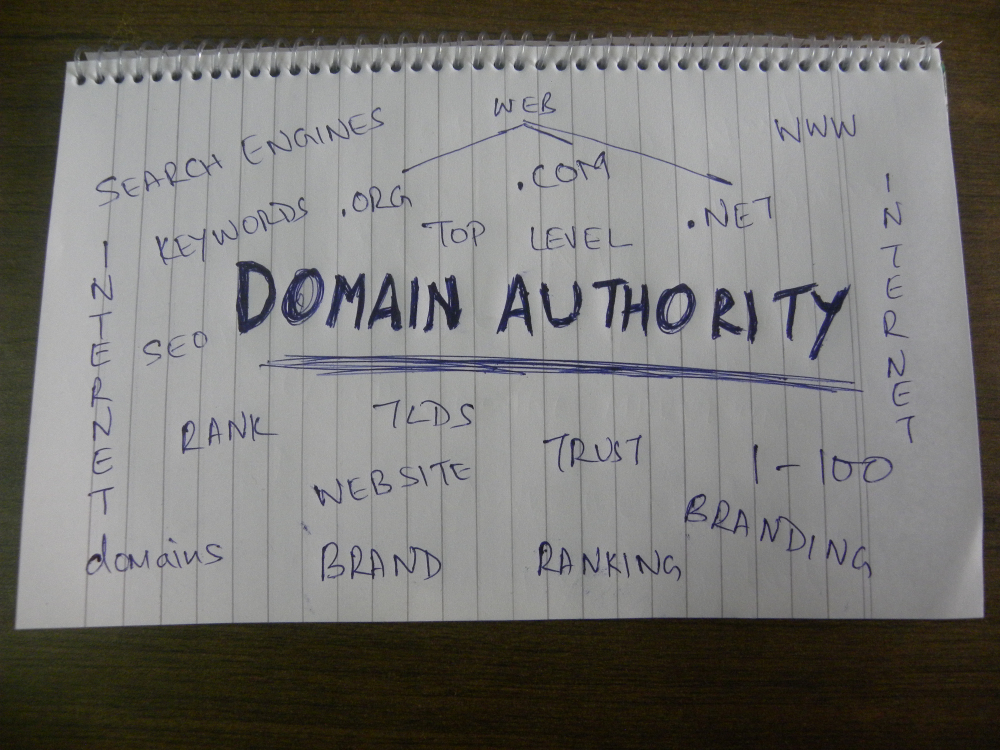I want to preface this article by stating that it could have been written about any SEO tool’s metrics. All the major tools have ways of measuring things that are important to the link builders and SEO professionals of the world.
Domain Authority just happens to be the one that seems to most often be erroneously viewed as being an actual Google metric, at least from my experience.
Domain Authority (DA) is Moz’s way of telling us how well a website should rank, using a 0 to 100 scale. The higher the DA, the better chance it has to rank, theoretically.
We do use various metrics, and we used Moz’s metrics for years. The majority of our clients used Moz so we did, too.
Now most of them don’t, for reasons that I’m not privy to, so neither do we.
We use what makes the most sense for us after all. That’s nothing to do with anything else.
Third-Party Metrics Are Not the Only Indicators of a Site
If you’re going to use a metric, pick one and stick to it, whichever one you prefer.
Just don’t use it as the only indicator of a site.
And please please please don’t confuse it as being an actual Google metric.
In any given month, I’d estimate that 75% of the requests for information that I receive in my Inbox mention Domain Authority.
It varies from “we require DA 50+ links” to “can you guarantee me that all the links will be DA 60 and higher?”
I tried something: responding with “we don’t use those specific metrics” just to see what would happen.
The result? None of the people I said that to responded back to me.
I then tried responding with “we don’t use those metrics and here’s why…” and that generated a fair amount of responses. (The “why” is simply because we use the tools our clients use, just FYI.)
My issue is that no one comes to us with requirements for specific numbers in any other tool.
Why is that?
I don’t know that I’ve ever gotten an email where a potential client demands a certain Topical TrustFlow.
Many will use other tools’ metrics in their set of guidelines for us of course, but no one immediately starts with any other metric besides DA.
Third-Party Metrics Don’t Equate to PageRank
I recently had a discussion with a potential client where I explained how we analyze a site.
She asked me why we stopped using DA since “it’s the closest thing to Google’s PageRank, right?”

We don’t know that.
That’s the big problem with DA. It doesn’t come from Google.
It comes from a company that has a way of measuring something.
Moz even specifically states that DA is not used by Google.
“Domain Authority is not a metric used by Google in determining search rankings and has no effect on the SERPs.”
Why does this seem to confuse so many?
Part of the issue that (I think) confuses people is the word “authority” and the fact that DA is, obviously, Domain Authority. That word is very powerful and they were wise to use it for marketing.

When people talk about authority, they are talking about a concept that can’t immediately and easily be measured.
Recently I said this in a webinar:
“…authority is very hard to measure. I use that term though, but I doubt I could really explain what I mean haha. I mean there are some clearly authoritative sites like the New York Times or CNN but then there are sites that I’d consider to be authorities in music, for example, but they might not rank over Rolling Stone or anywhere near them.”
Mark Traphagen has a great article that dives in deep to authority. This bit, in particular, stands out to me:
“Google used to make a version of PageRank visible to users of the Google Toolbar, but they no longer do that. Instead, many SEO professionals use third-party metrics, such as:
- Domain Authority and Page Authority from Moz.
- Citation Flow and Trust Flow from Majestic.
- Domain Rank and URL Rank from Ahrefs.
Each of these metrics does a good job of helping you evaluate the merits of a page and offering a working estimate for how much PageRank it has to pass.
Still, you should understand that these are only back-engineered estimates of how authoritative Google sees the domain or page, and not actual representations of PageRank.
It’s also important to be aware that none of these tools provide a complete picture of all links on the web.
Unlike Google, these tools do not have the infratructure required to crawl the entire web, so they instead focus on discovering a significant sample of the links to a given site or page.”
These are “not actual representations of PageRank.”
That’s the critical bit.
Google’s John Mueller even told us that Domain Authority is “a tool by Moz.”
A couple of days ago, I was doing discovery for a super picky (and long-term) client who automatically discounts sites if they don’t meet his minimum metric.
I found five really great sites that ranked in the top 30 for my target keywords.
To me, all of them looked like good placements that I would expect the client to like. However, sadly none of them met his criteria given for metrics.
In this case, it wasn’t Domain Authority, it was Majestic’s TrustFlow. I decided to ask a friend to look up the DA on these and it was low on all of them.
But the sites were ranking well and after looking at traffic estimates, their traffic seemed healthy.
Why wouldn’t I want a link on a site that ranked well and got good traffic?

Oh right, the metrics weren’t good enough.
(I’ve stated my case to this client – and many others – about being such a stickler for metrics above all else, but he’s one who won’t budge.)
A while back, Moz updated their Domain Authority to make it more accurate and help weed out spammier sites.
Around a month ago when I still used Moz, I grabbed a small list of sites that we had in our Do Not Contact Database and checked to see what their DA was now.
I’d expected the DA to be very low on these sites as many of them are in our database because they are constantly spamming everyone with emails offering to sell links and almost all of them openly sell links on their sites.
Surprisingly, about 75% of them still had a DA higher than 30.
At the time I entered them into this database, I recorded their current DA and most of them stayed within a few points of that original DA, years later.
What Does That Tell You?
When we conduct manual discovery (meaning my team searches the web for something just like you would), we also see a lot of sites that have a great DA, terrible DR (Ahref’s Domain Rating metric), and completely unusual Topical TrustFlow.
We see some low DA sites that look great in Majestic and Ahrefs.
We see some that look good or bad across all three tools.
Some sites have great metrics and are deindexed in Google.
Some have zero traffic or steep declines but still, the DA is good!
Our general rule is to go to the 10th page in the SERPs, meaning we’re looking at the top 100 sites. Many of these sites with mixed or poor metrics are in the top 30. We even see this in the top 10 at times.

You Can’t Judge a Site Based on a Single Metric
You simply cannot judge a site by its DA, or by its DR, or by its anything else that’s just one metric.
Even if we knew Google’s PageRank for a site, that shouldn’t be used as the most important metric when you’re deciding whether you’d like a link there.
They’re all great metrics, but site analysis is not that black and white.
More Resources: